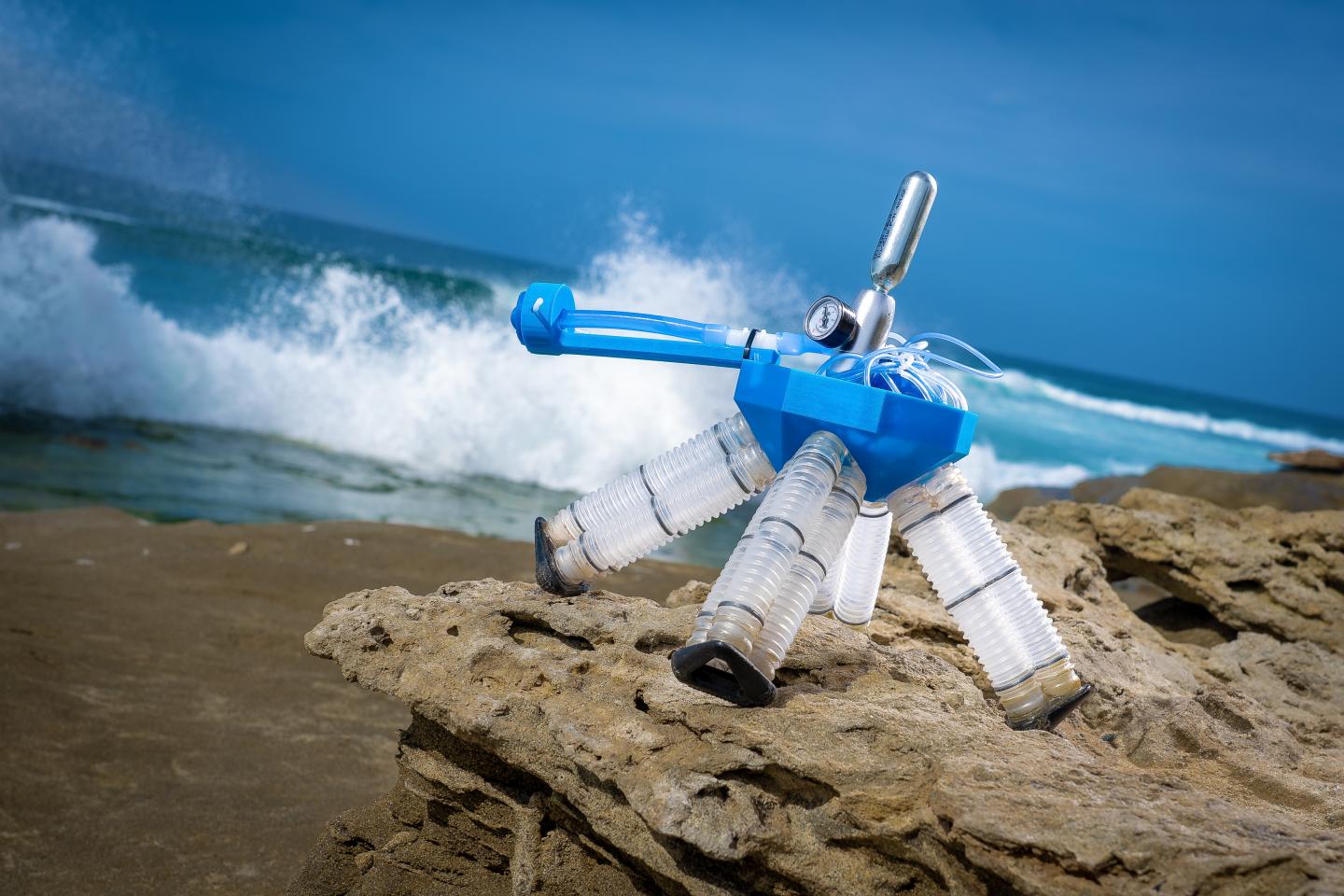Last summer, several states in the U.S., including New York and Florida, cooperated with robot manufacturers to launch a pilot project to provide companion animal robots to elderly people living in isolation for a long time due to COVID-19. It was intended to alleviate the loneliness of the elderly with companion animal robots in a situation where even family visits at nursing homes were restricted.
According to a recent study by researchers at Cambridge University, companion animal robots are as effective in reducing loneliness as real companion animals. The researchers also suggested that companion animal robots may be more suitable in a situation where infectious diseases such as Corona 19 are prevalent. This is because robots do not have to walk or remove excrement like a dog.

Researchers at UCSD in the US have developed a robot that can walk on all fours without an electronic device. ©University of California San Diego
However, a’soft robot’ that can walk on all fours without electronic devices has been developed in the US and is attracting attention. The robot is known to be capable of operating all functions, including controls and movement systems, simply by supplying compressed air.
Soft robots are not made of hard metal, but are made of flexible and elastic materials such as polymer and rubber. Even soft robots are controlled by electronic circuits and require complex parts such as circuit boards. These parts that make up a robot’s brain and nervous system are usually bulky and expensive.
However, the newly developed robot is controlled by a lightweight and inexpensive pneumatic circuit system consisting of tubes and soft valves. Nevertheless, the robot can walk on command and move in response to signals detected in the environment.
It can be operated even in a mine shaft.
The detailed research results of the robot, developed by Professor Michael Tolley of the University of California, San Diego (UCSD), were published in the international journal Science Robotics on February 17th.
This robot can be used for low-cost robots for entertainment such as toys, and has the advantage that it can be used in environments where electronic products cannot operate, such as MRI or mine tunnels. In particular, soft robots are suitable as companion animal robots because they easily adapt to the environment and operate safely close to people.
“It was the focus of our work to create the simplest nervous system that works with air,” said Professor Michael Toly, who led the study. “But you can use this method to create very complex robots with brains.”
The robot developed by Professor Toly’s team is known to mimic the reflexes of mammals that are driven by nerve responses in the spine, not the brain. In other words, it is inspired by an animal’s neural circuit called a’central pattern generator’ that is composed of very simple elements while being able to generate rhythmic patterns to control movements such as walking and running.
The researchers built a valve system that acts as an oscillator to reproduce the function of the generator. The oscillator is a device that generates electrical vibrations, and in this valve system, pressurized air enters the muscles of the four feet of the robot.
At this point, the researchers created an innovative part that delays the air injection and adjusts the robot’s gait. The robot’s gait is said to be inspired by the’sideneck turtle’.
Walk in the opposite direction when touching the wall
In addition, the four legs mounted on this robot each have three degrees of freedom, as each can be moved by three muscles. Degree of freedom refers to the number of independent movements allowed in a joint.
There are three cylindrical chambers connected in parallel on the leg tilted at an angle of 45 degrees downward, and when pressure is applied to the chamber, the four feet bend in opposite directions. The researchers simplified the control problem by crossing the chambers on each leg diagonally.

The robot has a sensor so it can walk in the opposite direction if it touches a wall. ©UCSD(Science Robotics)
In addition, the soft valve can switch the rotation direction of the four legs counterclockwise and clockwise. This mechanism is similar to two nerves changing connections in the brain.
The researchers said they will continue to work on improving them into robots that can walk even on natural terrain with uneven surfaces. This requires a more sophisticated sensor network and a more complex air compression system.
In addition, if the existing electronic circuit is added, basic functions such as walking can be created with a high-tech companion robot that can perform various commands of the owner while moving only with air.
(47)
